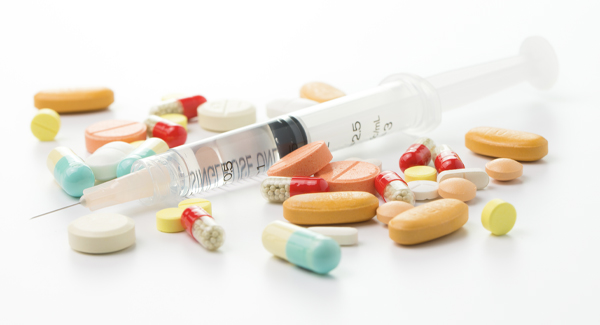The First Medications for PsA
Understand your treatment options when you are first diagnosed with psoriatic arthritis (PsA).
No treatment is right for everyone with psoriatic arthritis (PsA) because the disease can affect many areas of the body. So, it’s hard to predict what you and your doctor will decide to try first. The good news is there are many options.
You and your doctor will consider different factors when selecting your first medications including:
- Which parts of your body are affected.
- How severe your symptoms are.
- Which symptoms bother you most.
- Whether you have other health problems.
- Your insurance plan.
Treatment Goals
Treatment of PsA aims to:
- Reduce inflammation.
- Clear skin and nails.
- Relieve pain.
- Protect joint mobility.
- Make it less likely that you develop other health conditions.
Medication Choices
Some drugs ease symptoms and some slow the course of the disease. Some drugs work on both psoriasis and psoriatic arthritis. Others work only on skin problems or only on arthritis. Ask yourself what is most important to you. Then you and your doctor can make the best choice together.
Drugs to Control Disease
Your doctor will most likely offer you a medicine called a DMARD (disease-modifying antirheumatic drug). DMARDs help calm your symptoms, may slow down the disease, and prevent or slow joint damage.
- Conventional DMARDs and systemic psoriasis drugs are often the first medicines prescribed. Methotrexate is common for PsA. Other pills may be given if scaly skin is your main concern.
- Biologic DMARDs are used if your PsA wasn’t helped with other medicines. If you have severe disease, you may start with a biologic first. The medications are injected at home or given by IV at a clinic. Adalimumab (Humira) is one of the most commonly prescribed for PsA, but there are other choices.
- Targeted DMARDs are newer than the other types of DMARDs and are taken by pill. Apremilast (Otezla) and tofacitinib (Xeljanz) can both be used for PsA.
Drugs to Control Symptoms
Some medicines can help relieve symptoms of PsA without helping the underlying disease process.
- Nonsteroidal anti-inflammatory drugs (NSAIDs) reduce pain and swelling. Aspirin, ibuprofen (Advil) and naproxen sodium (Aleve) are available over the counter (OTC).
- Analgesics are used for pain relief. Acetaminophen (Tylenol) is the only OTC analgesic.
- Steroids (glucocorticoids) work fast to reduce inflammation. They can be smoothed onto skin lesions, taken by mouth, or given by injection into the muscle or a joint.
- Topical medicines are often used on psoriasis plaques, sore joints or both. There are several types to choose from. Your doctor can help you pick.
Shared Decision Making
PsA treatment is often a trade-off. No one treatment works best for all aspects of the disease. Some drugs can clear your skin while others are better at controlling joint damage. Some symptoms may improve more than others.
You and your doctor should choose your treatment together. Base your decision on your situation, main concerns and insurance coverage.
Be Patient
Most PsA treatments take a while to kick in. With methotrexate, your skin may start to clear in six weeks. Biologics may improve joint symptoms in three months. NSAIDs and topical treatments can help ease your itching and pain while you wait for the other treatments to work.
Learn more about medications for PsA at arthritis.org/drugguide.
Diagnosed With Psoriatic Arthritis?
Get the latest news and tips about living with Psoriatic Arthritis in the Living Your Yes! e-newsletter.


